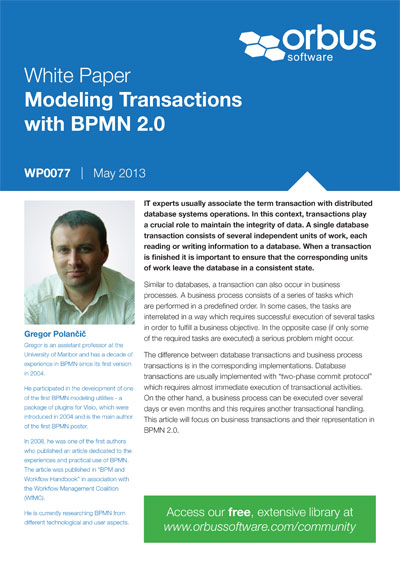In this paper, Gregor Polančič will focuses on business transactions and their representation in BPMN 2.0.
IT experts usually associate the term transaction with distributed database systems operations. In this context, transactions play a crucial role to maintain the integrity of data. A single database transaction consists of several independent units of work, each reading or writing information to a database. When a transaction is finished it is important to ensure that the corresponding units of work leave the database in a consistent state.
The difference between database transactions and business process transactions is in the corresponding implementations. Database transactions are usually implemented with “two-phase commit protocol” which requires almost immediate execution of transactional activities. On the other hand, a business process can be executed over several days or even months and this requires another transactional handling. This article will focus on business transactions and their representation in BPMN 2.0.
Please login to continue reading this article.
